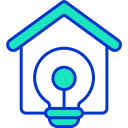Advancements in Smart Home Automation
Smart home automation has witnessed rapid innovation in recent years, dramatically transforming everyday living. New technologies seamlessly integrate with day-to-day routines, offering unprecedented levels of convenience, security, and energy efficiency. From voice-activated assistants to AI-driven climate control, the latest advancements are reshaping what it means to live in a connected home. As smart devices grow more intuitive and interoperable, homeowners are experiencing unparalleled levels of comfort and control, setting the stage for even more integrated and intelligent living spaces in the near future.


Previous slide
Next slide
Previous slide
Next slide

Seamless Device Interconnectivity
Universal Smart Home Protocols
The adoption of universal protocols such as Matter and Zigbee streamlines device compatibility across brands and manufacturers. With a shared language, devices from competing ecosystems can communicate and cooperate without issue. This eliminates the frustration of siloed products and offers homeowners the freedom to choose the best devices for their needs. Developers benefit as well, as they can create products that integrate seamlessly into a wide array of homes.
Mesh Networking Innovations
Mesh networking has emerged as an essential technology for reliable smart home connectivity. Rather than relying on a single hub, mesh networks allow devices to communicate through multiple nodes, extending coverage to every corner of the home. This minimizes dead zones and ensures that commands and alerts are delivered instantly, even in large or multi-level houses. Robust mesh networks also support device proliferation as the smart home ecosystem grows.
Unified Control Interfaces
Unified control interfaces serve as the access point for all connected devices, simplifying the management of diverse systems within the home. Mobile apps and dedicated home control panels bring climate, lighting, security, entertainment, and appliances together under one intuitive dashboard. This integration not only saves time but also ensures that users can engage with their home environment in a coherent, organized manner, further enhancing everyday convenience.

Enhanced Entertainment Experiences
Multi-room audio and video systems allow users to enjoy music and movies in any room, perfectly synchronized. Streaming services, smart speakers, and voice assistants work together, offering personalized playlists, volume control, and source selection from a single platform. Homeowners can move seamlessly between different spaces without interrupting their entertainment, while guests can enjoy independent media choices in separate areas, reflecting advancements in both technology and flexibility.

Sleep and Activity Tracking
Integrated sleep and activity trackers collect data on residents’ rest patterns, exercise routines, and overall movement. By analyzing this information, the smart home can suggest adjustments to lighting, temperature, and noise that promote better sleep or encourage physical activity. Data-driven insights help residents identify habits that may be impacting their well-being, with actionable suggestions that support sustained healthy routines.

Indoor Air Quality Management
Modern homes are equipped with sensors that monitor air quality, checking for pollutants, allergens, humidity, and carbon dioxide levels. When poor air quality is detected, the system can trigger ventilation, air purifiers, or adjust HVAC settings automatically. Notifications alert residents of any issues, allowing immediate action to be taken. This continuous, automated care ensures a healthier living environment, particularly for those with respiratory conditions or allergies.

Personalized Reminders and Alerts
Smart home systems can now provide personalized reminders to take medication, hydrate, exercise, or practice relaxation techniques. These prompts are based on user preferences and daily schedules, seamlessly integrating with other smart devices like watches or speakers. Such health-centric features enhance accountability and foster healthier habits, helping busy individuals maintain wellness without disruptive or intrusive notifications.
Adaptive Learning and Artificial Intelligence
Predictive Maintenance and Diagnostics
AI-powered predictive maintenance solutions track the performance of appliances and critical systems, anticipating issues before they escalate into costly repairs. By monitoring usage patterns, temperature ranges, and operational cycles, these systems can identify subtle signs of wear or malfunction. Automated alerts prompt residents to perform necessary maintenance or schedule professional service, increasing longevity and reliability of household devices.
Adaptive Environmental Adjustments
Using deep learning, smart homes now fine-tune environmental factors such as lighting, temperature, and energy usage according to the preferences and habits of each resident. The system learns when rooms are typically occupied and tailors climate settings or lighting profiles accordingly. These subtle, ongoing adjustments improve comfort and efficiency, turning the smart home into an attentive, unobtrusive companion that anticipates needs instead of merely responding.
Continuous System Optimization
Adaptive smart home platforms regularly update and self-optimize, drawing from vast datasets to refine their performance. Whether it’s improving energy algorithms, refining security patterns, or enhancing user interfaces, ongoing updates ensure the home is always leveraging the latest advancements. This continuous cycle of learning and improvement keeps the smart home ecosystem resilient, up-to-date, and maximally responsive to the evolving lifestyles of its residents.
